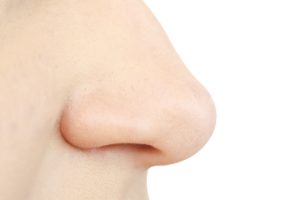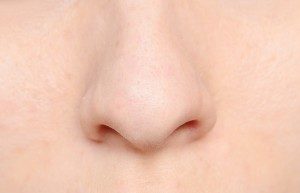 There are 2 small studies that recently looked at the issue of snot transplants as a treatment for chronic sinusitis. The idea behind snot transplants or sinonasal microbiota transplants is similar to fecal transplants - it's a transplant containing the entire microbial community (fungi, bacteria, viruses) in the form of a sample of snot or nasal mucus from a healthy donor to a recipient with chronic sinusitis (sign of an unhealthy sinus microbiome).
There are 2 small studies that recently looked at the issue of snot transplants as a treatment for chronic sinusitis. The idea behind snot transplants or sinonasal microbiota transplants is similar to fecal transplants - it's a transplant containing the entire microbial community (fungi, bacteria, viruses) in the form of a sample of snot or nasal mucus from a healthy donor to a recipient with chronic sinusitis (sign of an unhealthy sinus microbiome).
This idea has huge potential as a treatment. The goal in a sinus snot transplant is to have the healthy donor's snot (the mucus) take over and change (engraftment) the recipient's unhealthy sinus microbiome. The hope is that this will restore a healthy sinus microbiome in the person with chronic sinusitis, resulting in sustained improvement in sinus health.
The results from the studies are definitely encouraging, but also a bit mixed. For example, there was sustained improvement (up to 180 days) in 2 out of 3 patients in the 2024 study, but why not the third person? Also, illness may appear in the recipient of the transplant (see patient narratives in the first study). Also, why did some people drop out after the first snot transplant in the 2022 study? In both small studies, most of the the healthy donors were the recipient's spouse or a close friend.
The one concern that everyone has is of the possibility of some unknown disease being transferred from the donor to the recipient. [Note: Post about the Swedish study before it started]
Excerpts from Dec. 2022 Allergy and Rhinology: Upper airway microbiome transplantation for patients with chronic rhinosinusitis
The study, involving patients with CRSsNP, was of an open pre-post interventional design and involved 13 days of antibiotics (amoxicillin/clavulanate 875 mg/125 mg three times daily or, in case of penicillin-allergy, clarithromycin 500 mg two times daily) followed by five daily upper airway microbiome transplants.....All patients had over several years (i.e., far longer than the time span of this study) failed repeatedly on medical therapy and had undergone endoscopic sinus surgery (ESS) with a minimum of bilateral middle meatus antrostomies/ethmoidectomies
3.1 Patient narratives and adverse events Three patients opted not to participate further after visit 1 (V1). The remaining 22 patients completed the trial. Eighteen reported airway symptoms such as cough, sore throat, blocked or runny nose, or common cold-like symptoms during or soon after the transplant procedure. Seven indicated gastrointestinal problems, mainly diarrhea. One patient developed acute purulent rhinosinusitis and pneumonia 34 days after the last transplant. One patient developed a urinary tract infection, and one was diagnosed with diabetes type 2 (2 weeks before V8). One patient developed fever and cough during, and one experienced sinusitis-like symptoms 5 days after the transplant series. The latter two incidents were considered potentially caused by the microbiome transplant series. ...continue reading "Snot Transplants for Sinusitis?"

 An amazing new study is about to start in Sweden - this study will see if "snot transplants" work for the treatment for chronic sinusitis! Will this turn out to be a permanent treatment? While
An amazing new study is about to start in Sweden - this study will see if "snot transplants" work for the treatment for chronic sinusitis! Will this turn out to be a permanent treatment? While